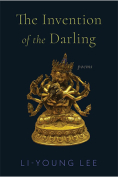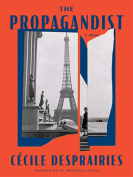The Third Realm by Karl Ove Knausgaard
 New York. Penguin Press. 2024. 512 pages.
New York. Penguin Press. 2024. 512 pages.
The Third Realm, the third installment in Karl Ove Knausgaard’s new fiction series, is a dark mirror of the first volume of the cycle, The Morning Star (2021). The novel is set mostly on the same two days as The Morning Star and revolves around the same event: a new star that appears in the sky and is seemingly connected to a number of uncanny events affecting the lives of the protagonists. The Third Realm is, however, narrated in large part by the spouses of the first book’s main characters, and it reflects back to the reader a more eerie image of Knausgaard’s novelistic universe. What had seemed ordinary in the previous volumes appears here uncannily reversed or distorted. The first narrator of The Morning Star, Arne, lured the reader in with his ostensible familiarity: a Norwegian man on holiday with his children and a wife in the throes of a manic episode, he resembled closely Knausgaard’s depiction of himself in his autobiographical series My Struggle. But that recognizable world looks like an outlandish foreign land in The Third Realm, which begins from the point of view of Arne’s wife, Tove.
While her husband and children are completely absorbed by their mundane activities, Tove is hunted by demonic spirits. It is not by chance that she is chosen as a witness to the irruption of hellish creatures into our world; she is an artist, a painter obsessed with the sexual thrust of old folktales and Christian religion, while her husband is a pragmatic literature professor. “You categorize. I decategorize,” she tells him. Like Arne and Tove and other couples in the story, The Third Realm is built on an equilibrium between rationalization and acceptance of the irrational, between the ordinary and the supernatural, between common sense and transgression, between realism and horror stories.
By balancing these two poles, Knausgaard masterfully achieves that all-encompassing representation of reality he has been striving toward since the beginning of his career. A Time for Everything was both the title of his second novel and the one he wished to give to his first book (which was instead published as Ute av verden, or Out of the World). By crossing the boundaries of verisimilitude and genre fiction, Knausgaard finally includes “everything” in the Morning Star series. The Third Realm programmatically shows the limitations of everybody’s perceptions and understanding; when scenes are rewritten from the point of view of another character, the reader is forced to acknowledge just how much the first narrator had missed or misinterpreted. But Knausgaard’s point is a larger one: it is our entire secularized, Western worldview that is too narrow and inadequate to comprehend our surroundings. Scientific findings only scratch the surface, and yet we believe that we have an explanation for everything.
The darkness of the vast unthought and the great unknown, however, cannot be wished away. A stunted spirituality and an overtly simplistic account of reality will always provoke an extreme reaction in the opposite direction. Norwegian black metal, which features prominently in the series and especially in The Third Realm, is an example of the dangers of secular idealism: in a country where violence was heavily censored and even the church refused to speak about the devil, boys suddenly started to burn churches and stab passersby. Knausgaard channels these and other transgressive energies in his writing. The result is a novel of astonishing breadth and depth, one that challenges our reality by embracing “everything.”
Elisa Sotgiu
Harvard University

































